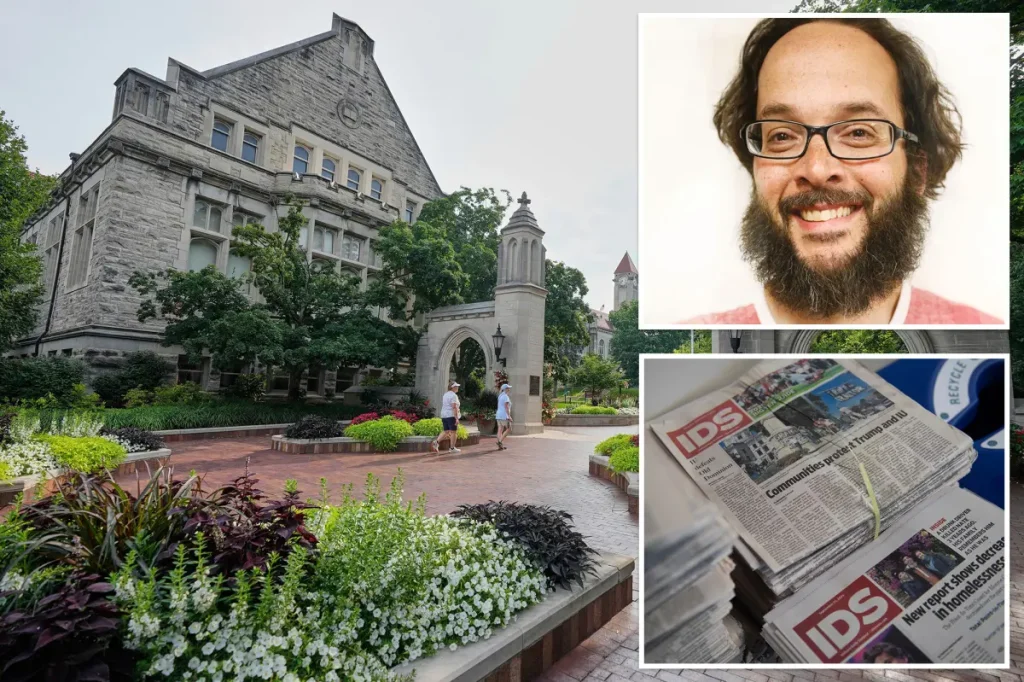Indiana University’s Clash with Student Newspaper Raises Free Press Concerns
In a controversial move that has ignited national debate, Indiana University recently eliminated the print editions of its acclaimed student newspaper, the Indiana Daily Student, and fired faculty adviser Jim Rodenbush after he refused to censor news content from a homecoming edition. This tension erupted at an unfortunate time as the university prepared to celebrate its football team’s historic national ranking during homecoming weekend. Rather than minimizing distractions as administrators may have hoped, the decision has instead thrust IU into the spotlight over concerns about First Amendment rights and administrative overreach. The controversy has attracted criticism from student media advocates, alumni, and high-profile figures like billionaire Mark Cuban, who have condemned what they see as an infringement on the newspaper’s editorial independence.
The Indiana Daily Student, consistently ranked among the nation’s top collegiate publications, has received approximately $250,000 annually in subsidies from the university’s Media School to offset declining advertising revenue. The conflict reached its breaking point on Tuesday when Rodenbush was terminated after refusing to comply with an order to prevent news stories from appearing in the homecoming print edition. “I had to make the decision that was going to allow me to live with myself,” Rodenbush explained, standing firm in his conviction that editorial decisions belong to the students. “In the current environment we’re in, somebody has to stand up.” His termination letter from Media School Dean David Tolchinsky cited “lack of leadership and ability to work in alignment with the University’s direction” as grounds for dismissal, coming just two days before the homecoming edition was scheduled for publication.
University officials have defended their actions, pointing to financial considerations and a strategic pivot toward digital media. A university spokesperson referred to a statement claiming the shift away from print was intended to better prepare students for modern media careers while addressing the paper’s financial challenges. Chancellor David Reingold issued a separate statement asserting that “the university has not and will not interfere with their editorial judgment,” maintaining IU’s commitment to free expression and editorial independence of student media. This stance, however, contradicts the experiences described by Rodenbush and student journalists. The university had already reduced the paper’s print schedule last year from weekly to seven special editions per semester, supposedly tied to campus events. According to Rodenbush, administrators began questioning why these special editions still contained news, culminating in the directive that print editions should contain no news content whatsoever.
The student response has been unequivocal, with co-editor-in-chief Andrew Miller denouncing Rodenbush’s termination as “a deliberate scare tactic toward journalists and faculty” while affirming that “IU has no legal right to dictate what we can and cannot print in our paper.” Legal experts have backed the students’ position, with Mike Hiestand of the Student Press Law Center pointing out that “First Amendment case law going back 60 years shows student editors at public universities determine content.” Hiestand expressed disbelief that such a clear violation would come from an institution of IU’s caliber, saying, “It’s open and shut, and it’s just so bizarre that this is coming out of Indiana University… a place that absolutely should know better.” While the university has allowed the newspaper to continue publishing online, the elimination of all print editions represents a significant curtailment of the publication’s reach and traditional format.
Though Rodenbush couldn’t identify any single story that might have triggered the administration’s actions, he suggested the moves might reflect a “general progression” of administrators trying to shield the university from negative publicity. This theory gains credibility when considering the newspaper’s recent coverage. Undeterred by the print ban, student journalists responded by publishing several hard-hitting stories online, including coverage of a film critical of arrests made during pro-Palestinian demonstrations, reports on campus sexual assaults, and an FBI raid on a former professor suspected of embezzlement. The paper had also been covering allegations that IU President Pamela Whitten plagiarized portions of her dissertation, with the most recent article on this topic appearing in September – raising questions about whether administrative sensitivity to critical reporting influenced the decision to restrict the paper’s operations.
The clash between Indiana University administration and its student newspaper reflects broader tensions emerging nationwide between institutional image management and journalistic freedom on college campuses. As universities increasingly function as brand-conscious enterprises concerned with enrollment, donations, and reputation, student journalists often find themselves navigating complicated power dynamics when their reporting conflicts with administrative messaging priorities. The situation at Indiana University serves as a powerful reminder of the essential role student media plays in academic communities – not just as training grounds for future journalists, but as vital watchdogs holding institutions accountable. As this controversy continues to unfold, it highlights the delicate balance between university oversight of student organizations and the fundamental principle that editorial independence must be preserved if student journalism is to fulfill its democratic function. For now, the Indiana Daily Student continues its work online, demonstrating that even without access to print, student journalists remain committed to serving their community through truthful, independent reporting.


